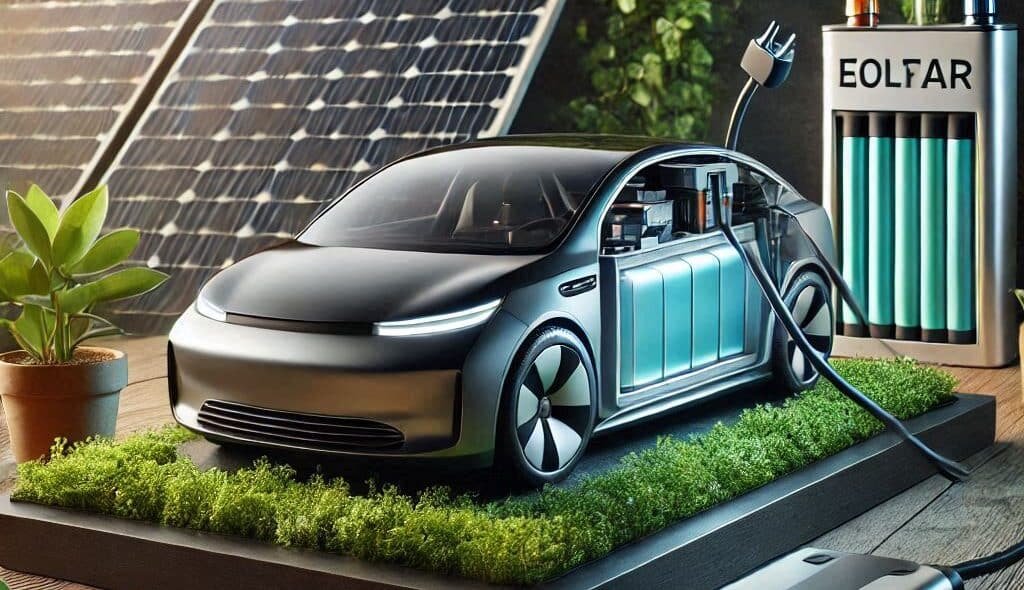In recent years, the automobile industry has undergone a seismic shift, driven by advancements in technology and a growing urgency to combat climate change. The future of automobiles is not only about cutting-edge designs and features but also about reimagining how vehicles are powered. From electric vehicles (EVs) to hydrogen fuel cells and synthetic fuels, the landscape of transportation is transforming rapidly. This article delves into the latest trends in automotive innovation and the fuels that are set to define the next era of mobility.
The Rise of Electric Vehicles
Electric vehicles have become the poster child of sustainable transportation. Over the past decade, EVs have evolved from niche products to mainstream options, thanks to significant investments in battery technology and supportive government policies.
Advancements in Battery Technology
One of the critical factors behind the success of EVs is the improvement in lithium-ion batteries. Modern batteries offer higher energy density, faster charging times, and longer lifespans. Companies like Tesla, CATL, and BYD are leading the charge in battery innovation, with solid-state batteries on the horizon promising even greater efficiency and safety.
Global Adoption and Infrastructure
Governments worldwide are promoting EV adoption through subsidies, tax incentives, and the development of charging infrastructure. Countries like Norway, where over 80% of new car sales are electric, demonstrate the potential for widespread adoption. Charging networks are expanding rapidly, with companies like ChargePoint and Electrify America building ultra-fast charging stations that can replenish a vehicle’s range in minutes.
Challenges Ahead
Despite their advantages, EVs face challenges such as high initial costs and the environmental impact of mining rare earth materials for batteries. Recycling and developing alternative materials are essential to making EVs more sustainable.
Hydrogen Fuel Cell Vehicles: The Next Frontier
While electric vehicles dominate headlines, hydrogen fuel cell vehicles (FCVs) are gaining traction as a complementary solution. FCVs use hydrogen gas to generate electricity, emitting only water vapor as a byproduct.
Advantages of Hydrogen
Hydrogen has several advantages over traditional fuels and even EVs in certain scenarios. It offers a high energy density, enabling vehicles to travel longer distances on a single tank. Refueling is also faster compared to charging an EV, making hydrogen ideal for heavy-duty vehicles like trucks and buses.
Current Challenges
However, hydrogen faces hurdles such as the lack of refueling infrastructure and the high cost of production. Most hydrogen today is produced from natural gas, which is not entirely sustainable. Green hydrogen, generated using renewable energy, is seen as the key to unlocking the potential of this technology.
Future Prospects
Countries like Japan and South Korea are heavily investing in hydrogen technology. Automakers such as Toyota, Hyundai, and Honda have already introduced FCVs like the Toyota Mirai and Hyundai Nexo. As the cost of green hydrogen decreases and infrastructure expands, hydrogen is expected to play a crucial role in decarbonizing transportation.
Synthetic Fuels: A Bridge to the Future
Synthetic fuels, also known as e-fuels, are another promising alternative. Produced by combining hydrogen with carbon dioxide captured from the atmosphere, these fuels can power internal combustion engines with significantly reduced emissions.
Benefits of Synthetic Fuels
Synthetic fuels can be used in existing vehicles without requiring modifications, making them an attractive option for reducing emissions from the current fleet. They also have a higher energy density than batteries, making them suitable for applications like aviation and shipping.
Challenges and Adoption
The production of synthetic fuels is energy-intensive and costly. However, with advancements in renewable energy and carbon capture technologies, their viability is improving. Porsche and other manufacturers are investing heavily in e-fuel production, seeing it as a way to keep traditional engines relevant in a low-carbon future.
Autonomous Vehicles: Redefining Mobility
In addition to new fuels, the rise of autonomous vehicles is set to revolutionize transportation. Self-driving cars promise to enhance safety, reduce congestion, and improve accessibility for those unable to drive.
Technological Innovations
Autonomous vehicles rely on a combination of sensors, cameras, and artificial intelligence to navigate. Companies like Waymo, Tesla, and Cruise are leading the way, conducting extensive testing and refining their technologies.
Challenges and Concerns
Despite the promise of autonomous vehicles, there are significant challenges, including regulatory hurdles, public trust, and the need for robust cybersecurity measures. Additionally, the integration of autonomous vehicles with traditional traffic systems remains a complex task.
The Role of Policy and Collaboration
The transition to new fuels and technologies requires coordinated efforts from governments, automakers, and energy providers. Policies that incentivize innovation, invest in infrastructure, and set clear emission targets are crucial for driving progress.
Global Commitments
Many countries have pledged to phase out internal combustion engine vehicles by 2035 or 2040. The European Union, for instance, has introduced strict CO2 emission standards, while China is leading in EV production and adoption.
Collaboration Across Industries
Automakers are partnering with tech companies, energy providers, and governments to accelerate the transition. For example, General Motors and Honda are collaborating on hydrogen fuel cell technology, while Tesla’s Supercharger network is expanding through partnerships with energy companies.
Conclusion
The future of automobiles is an exciting blend of innovation and sustainability. Electric vehicles, hydrogen fuel cells, and synthetic fuels each offer unique advantages and challenges, collectively shaping a cleaner and more efficient transportation landscape. As technology continues to evolve and global efforts to combat climate change intensify, the way we power our vehicles—and the very concept of mobility—is undergoing a profound transformation. The journey ahead promises not only greener roads but also smarter and more connected vehicles that redefine how we travel.



